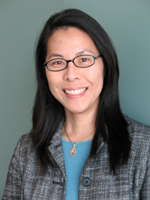
Spring/Summer 2016
Misconceptions of the Relationship between Physical Activity and Work-Related Burnout
Jason D. Cohen, BS, Physical Activity SIG student representative

Shine Chang, PhD
The Physical Activity Special Interest Group (SIG) interviewed Shine Chang, PhD, about the relationship between work-related burnout and physical activity, as well as what current research suggests. Dr. Chang is the director of the Cancer Prevention Research Training Program, a distinguished teaching professor at the University of Texas System, and a professor of epidemiology at the Division of Cancer Prevention and Population Sciences at the University of Texas MD Anderson Cancer Center.
PA SIG: With respect to faculty members conducting research or serving in clinical settings, what is the current understanding of why burnout is on the rise?
Chang: Burnout can happen at all levels, especially to those who are high performers. Conventional thinking is that burnout is an issue of the individual and the individual’s habits. However, current research suggests that work-related burnout and overload are actually a combination of what individuals do, how they respond to their environment and the demands routinely placed on them. So, over time, especially in research intensive institutions, there has been an increased load placed on researchers and clinicians to do more with the same or less time, resources, and energy, which in turn, increases overload and burnout. … It is also important to point out that burnout is a state characteristic, not a trait.
PA SIG: Is physical activity an ideal option for lowering or preventing symptoms of burnout?
Chang: When institutions respond to faculty by providing solutions such as meditation sessions, healthy dieting options, informative seminars, and fitness centers, that’s good. But, the major part of the problem is the continuous demand on faculty time, such as grants, heavier patient loads, and other factors not addressed by improved lifestyle behaviors. The formerly discussed provisions are the wrong solution for the actual problem because they do not directly address the root cause of the stress. While regular physical activity is an excellent mechanism for combatting stress, long-term improvement can only be addressed by revisiting and restructuring factors stemming directly from the work environment. Rather than creating quick-fix solutions, institutions should be focusing on reducing the burdens routinely placed on their faculty members, not on non-work related changes such as exercising.
PA SIG: How can faculty members recognize and actively address burnout?
Chang: I recommend the work of Dr. Christina Maslach. She is a nationally recognized researcher and professor at UC Berkley, and in the past was the vice provost for undergraduate education among other distinguished positions. Dr. Maslach is one of the foremost figures in burnout research; she created a validated instrument for assessing burnout that is widely used. The Maslach Burnout Inventory (MBI) has three features: emotional exhaustion, depersonalization (meaning one stops treating people as individuals and being polite), and a lower sense of personal accomplishment. For instance, if you are high in emotional exhaustion and depersonalization, and low in personal accomplishment, you are on your way to being, or already are, burned out. It is important to note that severe burnout may require the support and guidance of a trained counselor, ideally knowledgeable in the area of burnout. Time off can help, as well as increasing physical activity and sleep, but emotional constructs need to be addressed as well.